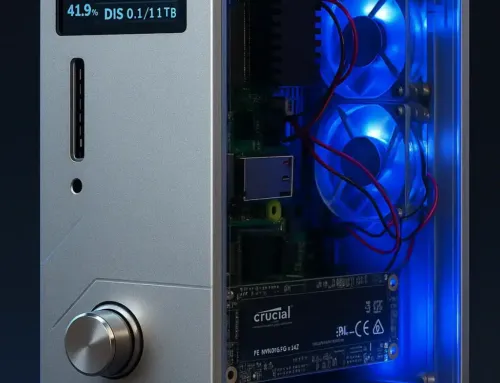
Approx. read time: 4.7 min.
Post: Laser-Induced Magnetism: Pioneering Room Temperature Quantum Computing
Quantum Leap in Magnetic Computing: Scientists Achieve Room Temperature Magnetization with Lasers
Introduction
In a groundbreaking achievement, scientists have magnetized a non-magnetic material at room temperature using lasers. This unprecedented feat could pave the way for ultrafast magnetic computing, transforming data storage and information transfer. The study, led by Professor Alexander Balatsky from the Nordic Institute for Theoretical Physics (NORDITA), demonstrates a significant step towards developing faster, more energy-efficient computers.
The Quest for Quantum Computing
Quantum mechanics has long promised revolutionary advancements in computing. Quantum computers, leveraging the principles of superposition and entanglement, have the potential to perform complex calculations at speeds unattainable by classical computers. However, the delicate nature of quantum states poses a significant challenge. Quantum states are notoriously delicate and prone to decoherence due to environmental noise, such as thermal vibrations.
To overcome this, researchers typically cool materials to near absolute zero, stabilizing the quantum states. However, maintaining such extreme conditions is resource-intensive and impractical for widespread application. The new breakthrough offers a solution by achieving quantum behavior at room temperature, thus simplifying the requirements for quantum computing systems and making them more viable for broader use.
The Breakthrough: Dynamic Multiferroicity
In 2017, Professor Balatsky and his team proposed a theoretical approach called “dynamic multiferroicity,” where electrical polarization induces magnetism in non-magnetic materials. This theory involves manipulating the position of titanium atoms within a material to generate a magnetic field. The recent study, published in the journal Nature on April 10, 2024, successfully demonstrated this theory using titanium atoms surrounded by strontium titanate, an oxide made from titanium and strontium.
Understanding Dynamic Multiferroicity
Dynamic multiferroicity refers to the interplay between different types of ferroic orders in a material, specifically between electrical polarization and magnetization. Traditionally, materials exhibiting multiferroic properties are rare and typically require low temperatures to maintain their state. Balatsky’s approach leverages dynamic, rather than static, interactions to induce magnetism, opening up possibilities for room temperature applications.
The Experiment: Laser-Induced Magnetism
The researchers employed a 1,300-nanometer wavelength infrared laser to transmit circularly polarized photons in narrow wavelength bands. These laser pulses, delivered in femtosecond bursts of 800 microjoules, stirred the atoms within the material, creating circular motion. The direction of the circular polarization determined the orientation of the magnetization: left-circularly polarized light pointed the north pole upwards, while right-circularly polarized light pointed it downwards.
Key Components of the Experiment
- Infrared Laser: The choice of a 1,300-nanometer wavelength was crucial for effectively interacting with the material’s atomic structure without causing damage.
- Circularly Polarized Photons: By using circular polarization, the researchers were able to control the direction of the induced magnetic field precisely.
- Femtosecond Bursts: Extremely short laser pulses ensured minimal heat dissipation and allowed for ultrafast manipulation of atomic states.
This induced magnetic field, as strong as a refrigerator magnet, existed only while the atoms were in motion. The use of lasers to control lattice vibrations marks a significant advancement, allowing the creation of magnetic fields at room temperature. This breakthrough demonstrates the potential of photonic techniques in manipulating material properties for technological applications.
Implications for Computing
This discovery holds immense potential for the future of computing. The ability to create ultrafast magnetic switches at room temperature could revolutionize data storage and information transfer. Here are some key implications:
Faster Data Storage
The switchable magnetic fields could lead to significantly faster data storage devices. Traditional magnetic storage relies on slower mechanical parts, whereas laser-induced magnetism can operate at much higher speeds, potentially increasing data transfer rates by orders of magnitude.
Energy Efficiency
Room temperature operation eliminates the need for energy-intensive cooling systems, making computers more energy-efficient. This reduction in energy consumption is not only cost-effective but also environmentally beneficial, as it decreases the carbon footprint of data centers and computing facilities.
Miniaturization
Smaller, faster transistors based on this technology could lead to more compact computing devices. As the demand for portable and powerful devices grows, this technology could enable the development of ultrathin laptops, high-performance smartphones, and other compact electronic gadgets.
Related Developments
This is not the first instance of using light to manipulate magnetism for computing. Earlier this year, a separate study demonstrated the use of the magnetic component of light to control the magnetism of solid materials, indicating a trend towards light-powered magnetic computing components. These advancements highlight a broader shift in the field towards integrating optical techniques with magnetic and quantum computing principles.
Trends in Photonic Computing
The convergence of photonics and quantum computing is driving innovation across multiple domains:
- Optical Quantum Communication: Leveraging light for secure and high-speed information transfer.
- Photonic Chips: Integrating optical elements into traditional silicon chips for faster data processing.
- Quantum Sensors: Utilizing quantum states manipulated by light for highly sensitive measurement devices.
Conclusion
The successful room temperature magnetization of non-magnetic materials using lasers marks a quantum leap in magnetic computing. This breakthrough by Professor Balatsky and his team opens new avenues for ultrafast, energy-efficient computing systems. As research progresses, we can expect further advancements that will bring us closer to realizing the full potential of quantum computing.
The implications of this discovery are profound, promising faster data storage, greater energy efficiency, and more compact devices. As the field of photonic and quantum computing continues to evolve, these innovations will likely become integral to next-generation technologies, transforming how we store, process, and transfer information.
Scientists Use Lasers to Induce Magnetism at Room Temperature, Defying Conventional Quantum Limits.
Cold Beams: How Substance Is Cooled to Nearly Absolute Zero Using Lasers?
Related Posts:
China’s Quantum Leap: A Potential Threat to Global Cybersecurity
Exploring AI in Warfare: The US Army’s Experiment with OpenAI in Military Strategy Games
Introduction to JavaScript – Variables
Why Quantum Computing’s Time Is Now
Revolutionizing E-Commerce: China’s Unhackable Quantum Internet Transactions Unveiled








